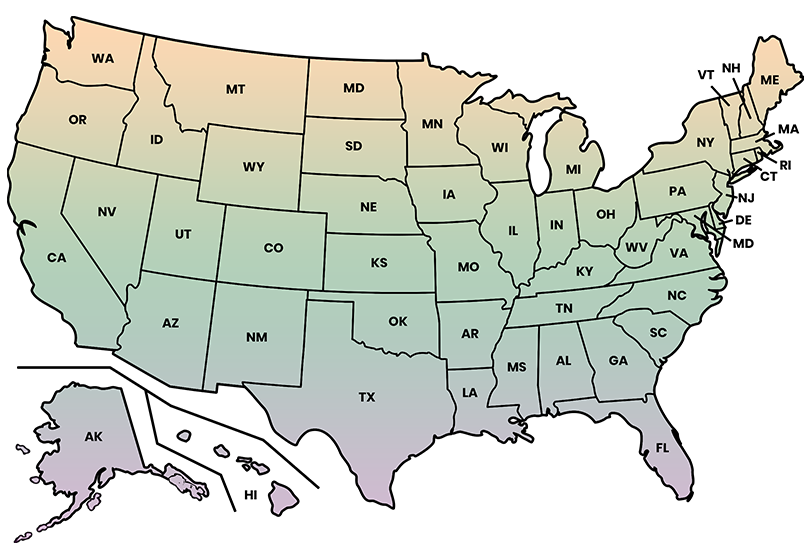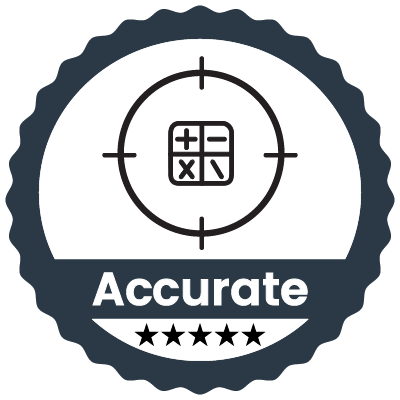If you are operating your business in the state of Vermont, there are a number of things you should know before you provide pay stubs to employees and contractors.
Below are laws and regulations applicable to employers in Vermont for running payroll and providing pay stubs.

Pay stub regulations in Vermont
1. Are pay stubs required by law in Vermont?
Employers in Vermont must provide their employees with pay stubs every payday.
2. How often do you need a pay stub in Vermont?
You will need to pay your exempt employees at least weekly or semimonthly and monthly (upon written notice). As pay stubs are mandatory in Vermont, you will need to provide pay stubs every time you pay your employees.
3. What information can be included on a pay stub in Vermont?
The following information must be included in employee pay stubs:
- The total hours worked
- Hourly rate
- Each deduction fully itemized.
4. Does Vermont have a state income tax?
Yes, state income taxes are applicable to employees in the state of Vermont.
5. Are there any other taxes applicable to Vermont?
No. There are no local taxes in addition to federal and state income taxes applicable to employees in the state of Vermont.
Information needed to generate pay stubs
To provide employees with accurate pay stubs, the information below is required.
- The employee's exemption status from state withholding
- Information such as filing status, total allowances, nonresident percentage, and additional state withholding amount.
Vermont wage and hour laws
Employers in Vermont state must adhere to wage and hour regulations, ensuring that non-exempt employees receive essential entitlements such as minimum wage, overtime compensation, mandated meal, and rest breaks, as well as accrued paid time-off benefits.
The following aspects are governed by law:
Minimum wage
Employers in Vermont are mandated by law to compensate employees with no less than the designated minimum hourly wage as prescribed by legislation.
If an employer in Vermont has two or more employees, they are required to adhere to a basic minimum hourly rate of $13.67 in 2024. Starting January 1, 2025, the minimum wage will increase to $14.01 per hour. Additionally, Vermont's minimum wage automatically adjusts to match the federal minimum wage rate if it surpasses the state's set minimum
Overtime pay
When employees work more than 40 hours in a workweek, employers are required to provide compensation at a rate of one and a half times the regular wage for those additional hours.
Meal break
Employees must be provided with a "reasonable opportunity" to take meals and rest breaks. If this opportunity lasts less than 20 minutes, it must be compensated as paid time.
Rest break
Rest breaks are not mandated for employers in Vermont.
Paid time off and leave
Employers in Vermont are obligated to provide their employees with both mandated and optional leave benefits.
| Required Leave | Non-Required leave | |
|---|---|---|
| paid | Unpaid | Paid or Unpaid |
| Sick leave - 1 hour for every 52 hours of work. | The Family and Medical Leave Act (FMLA) is federal legislation that allows eligible employees to take up to 12 weeks of unpaid leave. | Vacation leave |
| Jury Duty leave | Bereavement leave | |
| Military leave -up to 15 days | Holiday leave | |
| Crime Victim leave | Voting leave | |
Vermont state payroll taxes 2025
In Vermont, payroll taxes are categorized as follows:
- Vermont Personal Income Tax(PIT)
- Vermont State Unemployment Insurance (UI) tax
- Vermont Health Care Fund Contributions
Vermont Personal Income Tax(PIT)
In Vermont, the 2024 tax year state tax rate structure contains four brackets (3.35%, 6.60%, 7.60%, and 8.75%), called Vermont state tax brackets. These brackets are assigned based on an individual's income level and filing status, which might also include Single, Married Filing Jointly, Married Filing Separately, and Head of Household.
Vermont 2024 Tax Rate Schedules
Single Filers
| Taxable Income | Tax Rate | Base Tax | Additional % Over |
|---|---|---|---|
| $0 - $47,900 | 3.35% | $0 | N/A |
| $47,900 - $75,000 | 6.60% | $1,605 | Over $47,900 |
| $75,000 - $116,000 | 6.60% | $3,393 | Over $75,000 |
| $116,000 - $242,000 | 7.60% | $6,099 | Over $116,000 |
| Over $242,000 | 8.75% | $15,675 | Over $242,000 |
Married Filing Separately
| Taxable Income | Tax Rate | Base Tax | Additional % Over |
|---|---|---|---|
| $0 - $39,975 | 3.35% | $0 | N/A |
| $39,975 - $75,000 | 6.60% | $1,339 | Over $39,975 |
| $75,000 - $96,650 | 6.60% | $3,651 | Over $75,000 |
| $96,650 - $147,300 | 7.60% | $5,080 | Over $96,650 |
| Over $147,300 | 8.75% | $8,929 | Over $147,300 |
Head of Household
| Taxable Income | Tax Rate | Base Tax | Additional % Over |
|---|---|---|---|
| $0 - $64,200 | 3.35% | $0 | N/A |
| $64,200 - $75,000 | 6.60% | $2,151 | Over $64,200 |
| $75,000 - $165,700 | 6.60% | $2,864 | Over $75,000 |
| $165,700 - $268,300 | 7.60% | $8,850 | Over $165,700 |
| Over $268,300 | 8.75% | $16,647 | Over $268,300 |
Married Filing Jointly
| Taxable Income | Tax Rate | Base Tax | Additional % Over |
|---|---|---|---|
| $0 - $64,200 | 3.35% | $0 | N/A |
| $75,000 - $79,950 | 3.35% | $2,513 | Over $75,000 |
| $79,950 - $193,300 | 6.60% | $2,678 | Over $79,950 |
| $193,300 - $294,600 | 7.60% | $10,159 | Over $193,300 |
| Over $294,600 | 8.75% | $17,858 | Over $294,600 |
Vermont State Unemployment Insurance (UI) tax
The implementation of the State Unemployment Tax Act (SUTA) targets resource people dealing with unemployment by presenting them with unemployment benefits. This program enables states to accumulate funds, which are eventually applied for administering unemployment insurance benefits to those currently without employment. SUTA costs in Vermont range from 0.40% to 5.40% are applicable.
The Vermont Department of Labor has declared the 2025 Unemployment Insurance (UI) Taxable Wage Base. Starting January 1, 2025, it will upward push from $14,300 to $14,800, marking an $500 growth.
Vermont tax filing 2025
- Report of New Employees
- Report of Independent Contractors
- Filing a Quarterly wage and tax Report(form C-101 )
- Filing personal income tax(form IN-111)
- Vermont Health Care Fund Contributions quarterly filing
Report of New Employees
In Vermont, employers are required to report new hires to the Vermont New Hire Reporting Center within 10 days of their employment start date. This can be accomplished by submitting Form C-61.
Report of Independent Contractors
In Vermont, employers are not required to report new hire contractors.
How to report employees' new hire in Vermont ?
You have the flexibility to utilize any of the following choices for reporting new hires.
| Online | Fax | |
|---|---|---|
| Employees New Hire Report | Vermont Department of Labor Address Information: 5 Green Mountain Drive P.O. Box 488 Montpelier, VT 05601 Direct Phone: 802-828-4344 Email: Labor.UIAndWages@vermont.gov | Fax 1: 802-828-4022 |
Filing a Quarterly wage and tax Report(form C-101 )
All Vermont employers subject to paying Unemployment Insurance (UI) for their employees are required to submit a quarterly wage and contribution report. Additionally, Vermont mandates electronic filing for all employers.
| For Wages Paid During | Due Date |
|---|---|
| Quarter 1(January - March) | April 30 |
| Quarter 2(April - June) | July 31 |
| Quarter 3(July - September) | October 31 |
| Quarter 4(October - December) | January 31 |
Filing personal income tax(form IN-111)
As per Vermont law, the state's personal income tax filing season adheres to the federal calendar. Consequently, taxpayers can submit their 2024 personal income tax return and settle any owed tax by April 15, 2025, without incurring penalties or interest.
Vermont Health Care Fund Contributions quarterly filing
Employers required to pay the assessment must do so quarterly, on or before the 25th day of the month following the end of each quarter. This implies that it is due on or before:
| For Wages Paid During | Due Date |
|---|---|
| Quarter 1(January - March) | April 25 |
| Quarter 2(April - June) | July 25 |
| Quarter 3(July - September) | October 25 |
| Quarter 4(October - December) | January 25 |
Have all the information handy?
With SecurePayStubs, you can calculate accurate federal and Vermont state taxes for your employees and generate pay stubs securely.
Processing payroll manually is complex
As a business owner who runs payroll manually, you will need to keep up with ever-changing payroll laws. You already have a lot on your plate and you might not want to get into the complex process of pay stub generation.
With SecurePayStubs, our paystub generator enables you to swiftly generate pay stubs for your employees with precise calculations for federal and Vermont state taxes, as well as for independent contractors, all in under 2 minutes.
Enter the basic employee and employer information, select a pay stub template for free, and let SecurePayStubs calculate the applicable payroll taxes accurately.
Spend less time generating pay stubs and more on your business growth.
This article has been updated from its original publication date of March 15, 2025.




